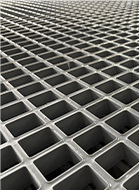loading...
- No. 9, Xingyuan South Street, Dongwaihuan Road, Zaoqiang County, Hengshui, Hebei, China
- admin@zjcomposites.com
- +86 15097380338
- Welcome to visit our website!
Innovative Applications of FRP Bridge Deck Panels for Enhanced Structural Performance and Durability
FRP Bridge Deck Panels Revolutionizing Infrastructure
The advancement of materials science has led to the emergence of Fiber Reinforced Polymer (FRP) composites, which are making significant inroads in various engineering applications. One area where FRP is proving particularly beneficial is in the construction of bridge deck panels. These panels are integral to the overall structure and functionality of bridges, and the use of FRP in this context offers numerous advantages over traditional materials.
Understanding FRP Materials
FRP is a composite material made up of a polymer matrix reinforced with fibers, typically glass, carbon, or aramid. This combination endows FRP with exceptional strength-to-weight ratios, corrosion resistance, and durability. Unlike conventional materials such as steel or concrete, FRP does not rust, which significantly extends the lifespan of bridge structures, especially in environments exposed to moisture and chemicals.
Lightweight and High Strength
One of the most appealing properties of FRP bridge deck panels is their lightweight nature. Traditional concrete panels can be cumbersome, requiring heavy machinery for installation and extensive support structures. In contrast, FRP panels can be manufactured to be significantly lighter without compromising strength. This feature allows for easier handling and installation, reducing labor and machinery costs during construction. Moreover, the reduced weight minimizes the loads transferred to the bridge’s supporting structures, potentially allowing for smaller and less costly support systems.
Corrosion Resistance
Corrosion is one of the primary challenges faced by bridge infrastructure, particularly in regions subject to harsh weather conditions or exposure to de-icing salts. Traditional materials, especially steel, are highly susceptible to rust, leading to costly maintenance and repairs. FRP materials, however, exhibit outstanding resistance to corrosion and chemical attack. By utilizing FRP bridge deck panels, engineers can significantly extend the life of a bridge and reduce long-term maintenance costs. This characteristic is especially beneficial in coastal areas or locations where infrastructure is frequently exposed to de-icing salts.
frp bridge deck panels

Design Flexibility
Another advantage of FRP panels is their design flexibility. The materials can be easily molded into various shapes and sizes, allowing for innovative and aesthetically pleasing designs. This versatility is particularly useful in modern bridge designs, which often prioritize not only functionality but also visual appeal. Additionally, the customization options available with FRP allow for tailored solutions to meet specific load requirements and bridge configurations.
Sustainability Considerations
As society moves towards more sustainable construction practices, the environmental impact of materials used in infrastructure projects is garnering increasing attention. FRP materials can be designed to be more environmentally friendly through recycling processes and the use of sustainable fibers. Furthermore, the longevity and reduced maintenance associated with FRP panels contribute to a lower overall carbon footprint for bridge construction and maintenance over time.
Challenges and Future Developments
Despite the numerous advantages of FRP bridge deck panels, challenges remain. Initial material costs can be higher compared to traditional materials, which can deter some projects. Additionally, the engineering community continues to research and establish codes and standards for the use of FRP in bridge applications. As these barriers are addressed, it is likely that the adoption of FRP technology will continue to grow.
In conclusion, FRP bridge deck panels represent a significant evolution in bridge engineering. Their lightweight nature, corrosion resistance, design flexibility, and potential for sustainability make them an attractive choice for modern infrastructure projects. As technology and manufacturing processes improve and awareness of the benefits grows, FRP is poised to become a staple material in the future of bridge construction, leading to safer, longer-lasting, and more efficient infrastructure.
-
The Rise of FRP Profiles: Strong, Lightweight, and Built to LastNewsJul.14,2025
-
SMC Panel Tanks: A Modern Water Storage Solution for All EnvironmentsNewsJul.14,2025
-
GRP Grating: A Modern Solution for Safe and Durable Access SystemsNewsJul.14,2025
-
Galvanized Steel Water Tanks: Durable, Reliable, and Ready for UseNewsJul.14,2025
-
FRP Mini Mesh Grating: The Safer, Smarter Flooring SolutionNewsJul.14,2025
-
Exploring FRP Vessels: Durable Solutions for Modern Fluid HandlingNewsJul.14,2025
-
GRP Structures: The Future of Lightweight, High-Performance EngineeringNewsJun.20,2025
